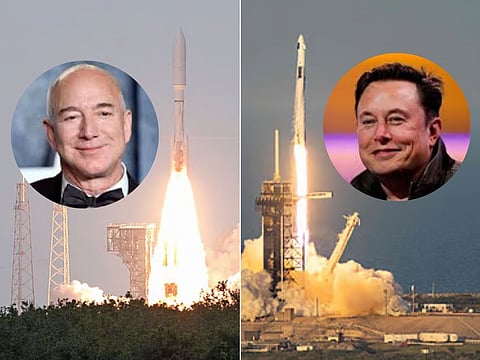Move over Starlink, here comes Kuiper
Amazon’s satellite internet showdown challenges Elon Musk’s Starlink dominance

Hold onto your space helmets, internet fans — Amazon is boldly going where few have gone before, launching its Project Kuiper satellites into orbit to challenge Elon Musk’s Starlink dominance.
On June 23, 2025, Amazon fired up a United Launch Alliance Atlas V rocket from Cape Canaveral, Florida, sending 27 shiny new Kuiper satellites zooming into low Earth orbit.
Talk about a cosmic internet upgrade.
High-speed, low latency
Project Kuiper aims to beam high-speed, low-latency internet to every nook and cranny of the planet — especially remote and underserved areas where reliable connectivity is still a dream.
With over 80 launches booked on rockets from ULA, Blue Origin, Arianespace, and even SpaceX (yes, Amazon is hitching a ride on Musk’s Falcon 9!), Kuiper is gearing up for a serious space race.
Amazon’s VP of Project Kuiper, Rajeev Badyal, says each launch is a chance to add more “capacity and coverage” to their network.
Plus, their satellites sport cool tech upgrades like phased array antennas and special coatings to reduce glare for astronomers.
The next-generation internet satellites provide
Besides providing redundancy for terrestrial communications, the next-gen internet satellite are fast becoming a showcase of digital disruption driven by tech titans, with far-reaching implications for Earth.
Starlink has a first-mover advantage, and currently boasts around 7,875 satellites and leads the market, but Kuiper is catching up fast.
Advanced propulsion
Kuiper’s satellites, however, are no push-overs. They're equipped with Hall-effect thrusters, an advanced propulsion system that enables precise in-space manoeuvring and station-keeping.
This helps keep satellites in optimal positions while maximising fuel efficiency — a crucial advantage in long-term, large-scale constellations.
Laser-fast satellite-to-satellite
Each Kuiper satellite features optical inter-satellite links (OISLs) — high-speed infrared laser connections that allow them to talk directly to each other in space.
These links can transfer data at up to 100 Gbps over distances of 2,600 km, enabling rapid, low-latency data routing without always needing to bounce signals to Earth.
Smarter hardware
Since testing prototypes in 2023, Amazon has significantly upgraded the production satellites.
The latest designs include enhanced phased array antennas, custom processors, improved solar arrays, and better optical and propulsion systems to support faster, more reliable connections, according to the company.
Built with astronomers in mind
Kuiper satellites are coated with a special dielectric mirror film that scatters sunlight, reducing their brightness in the night sky. This astronomy-friendly coating minimises their impact on ground-based telescopes and star-gazing research.
Fast internet, low lag
Kuiper aims to deliver broadband speeds of up to 400 Mbps, with latency between 20 and 40 milliseconds — performance that rivals or even surpasses current satellite internet offerings.
This means fast downloads, smooth video calls, and responsive browsing, even in hard-to-reach areas.
Price
Kuiper has designed multiple user terminals to serve a wide range of needs, according to satellite tech media:
Standard terminal: About 11 inches square and under 5 pounds, this model supports speeds up to 400 Mbps and is expected to cost under $400 — aimed for general consumers.
Ultra-compact terminal: A lightweight 7-inch model weighing just 1 pound, designed for residential and IoT applications, delivering speeds up to 100 Mbps at lower cost.
High-bandwidth terminal: Built for government and enterprise users, this larger 19 x 30-inch terminal can hit 1 Gbps speeds, ideal for data-intensive use in remote or mobile operations.
Battle for supremacy
With Amazon’s deep pockets and cloud computing muscle, the battle for internet supremacy is just heating up.
According to Forbes, Starlink's valuation hit $350 billion in December 2024, following a sale of insider shares.
In 2024, a market analysis projects that Amazon will spend $16.5 billion to $20 billion to get its project off the ground.
So get ready for a new cosmic contender.
Whether you’re streaming, gaming, or Zooming from the middle of nowhere, Kuiper promises to bring the web closer to the stars — and your devices.
Sign up for the Daily Briefing
Get the latest news and updates straight to your inbox







